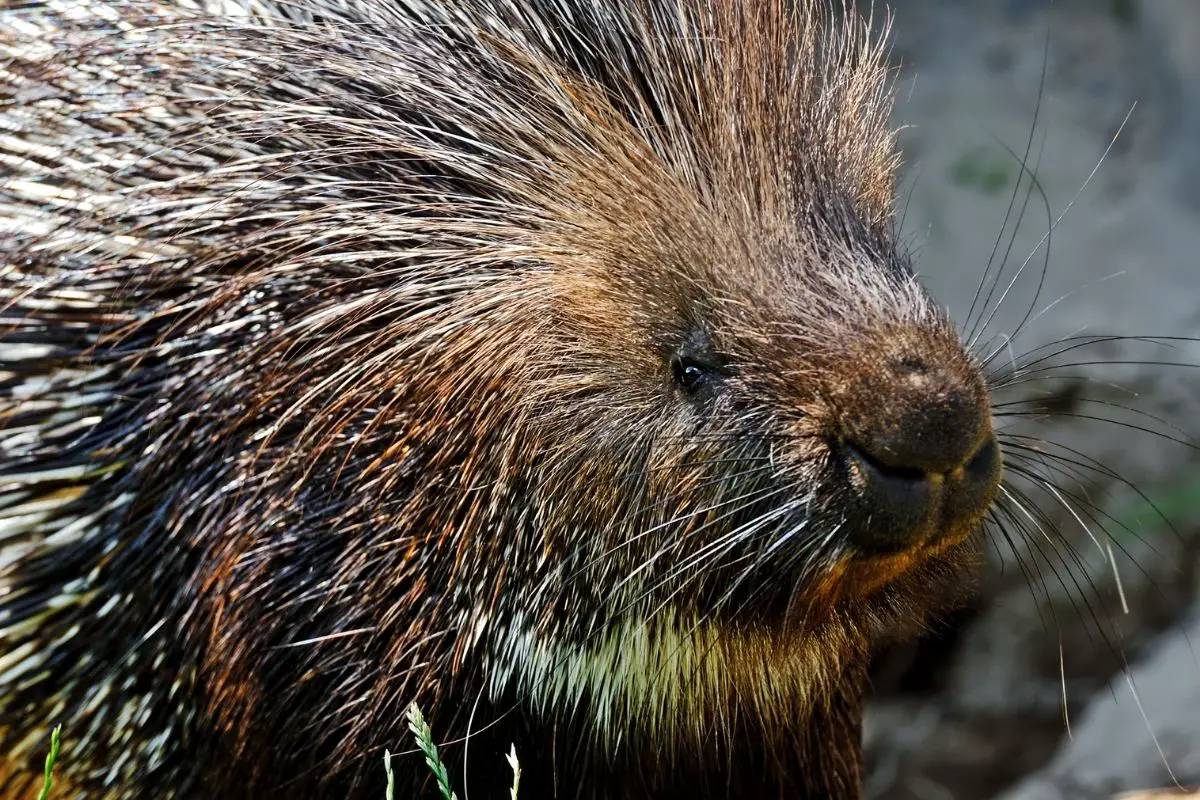
Even though porcupines are best known for their sharp quills, there’s more to these rodents than meets the eye! Porcupines are nocturnal creatures, which means they’re mostly active at night. During this time, it’s common to see porcupines foraging for food, munching on grass, or even climbing trees!
You might also find a porcupine in the water! While porcupines might not look like natural swimmers, their quills are actually filled with air that helps make them more buoyant. Swimming gives porcupines access to a wider range of food sources and can also help them to escape from predators.
What Do Porcupines Like to Eat?
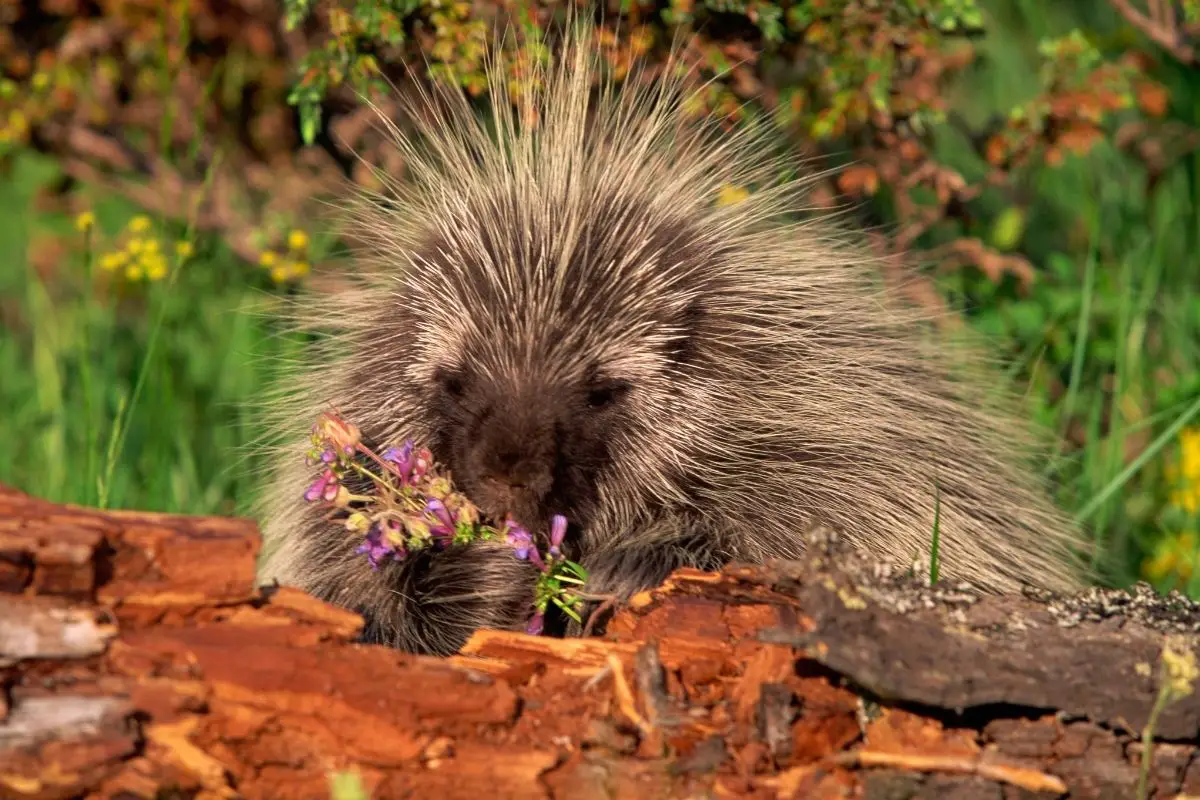
Porcupines are herbivores, which means they primarily eat plants. While their diets can vary based on the season, some of the foods they enjoy include grass, stems, bark, nuts, and fruit.
Although porcupines mostly eat food that they find scattered on the ground, they’ll pull branches, bark, and leaves from trees when they need more to eat.
When they’re in the water, porcupines seek out water plants, such as water lilies and arrowheads. Since the predators that are a threat to porcupines primarily live on land, swimming skills help to ensure that porcupines always have access to food when they need it. Porcupines that are kept in captivity may enjoy a wider range of foods.
Maggie, one of the Brookfield Zoo’s animal specialists, says that porcupines have the chance to try many different treats. “We like to offer animals all kinds of enriching items so that they can explore different things and get new items in their diet,” she says. “Every once in a while [our porcupines will] get new exciting items, like a piece of sugarcane.”
Are There Different Types of Porcupines?
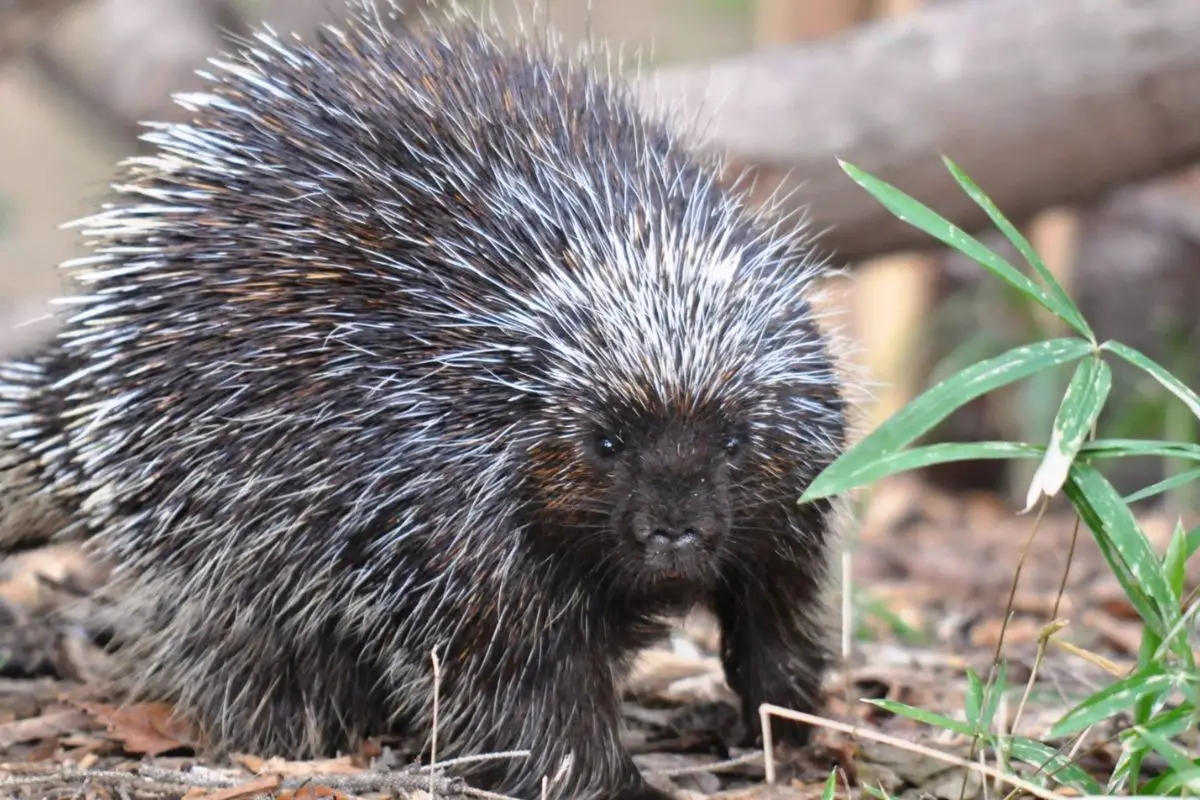
There are more than 50 different porcupine species worldwide. These species belong to two different families: Old World and New World porcupines. These families vary in a number of ways.
Old World Porcupines
Species in this family are native to Africa, Asia, and Italy. They’re round, stout, and have flattened quills. These porcupines tend to be much larger than species in the New World family and primarily live on land.
New World Porcupines
These porcupines are native to North and South America. They tend to be smaller than porcupines in the Old World family and have a mixture of quills and long soft hairs. Most species live in trees, though some porcupines live in dens that they build on the ground.
Do Porcupines Like to Climb Trees?
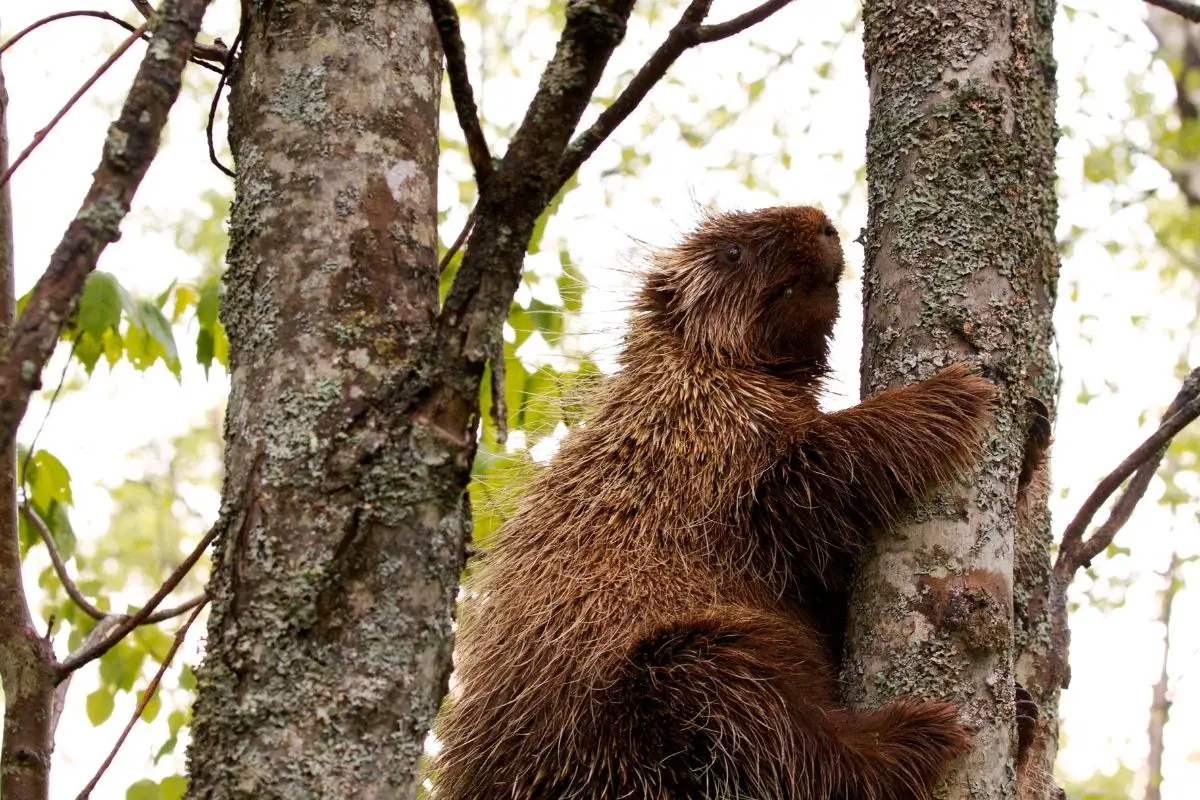
Not all porcupine species are tree climbers, but the New World porcupines that live in North and South America spend a lot of time in trees.
In fact, many species of porcupines have tails that they can wrap around branches, allowing them to stay safe and stable as they climb higher and higher. Even though porcupines are nocturnal, they do most of their tree climbing in the early hours of the morning.
They often climb all the way to the highest branches of a tree so that they can reach twigs that are just starting to sprout. For a porcupine, these twigs can be a tasty meal! Porcupines are fairly slow when they’re on the ground, but when they’re climbing trees, they can move at a much faster speed.
They’re able to cling to bark with their front and back claws, allowing them to scale a tree in no time. Although porcupines still spend most of their time on the ground, there are some porcupine species that live in trees.
Where Do Porcupines Live?
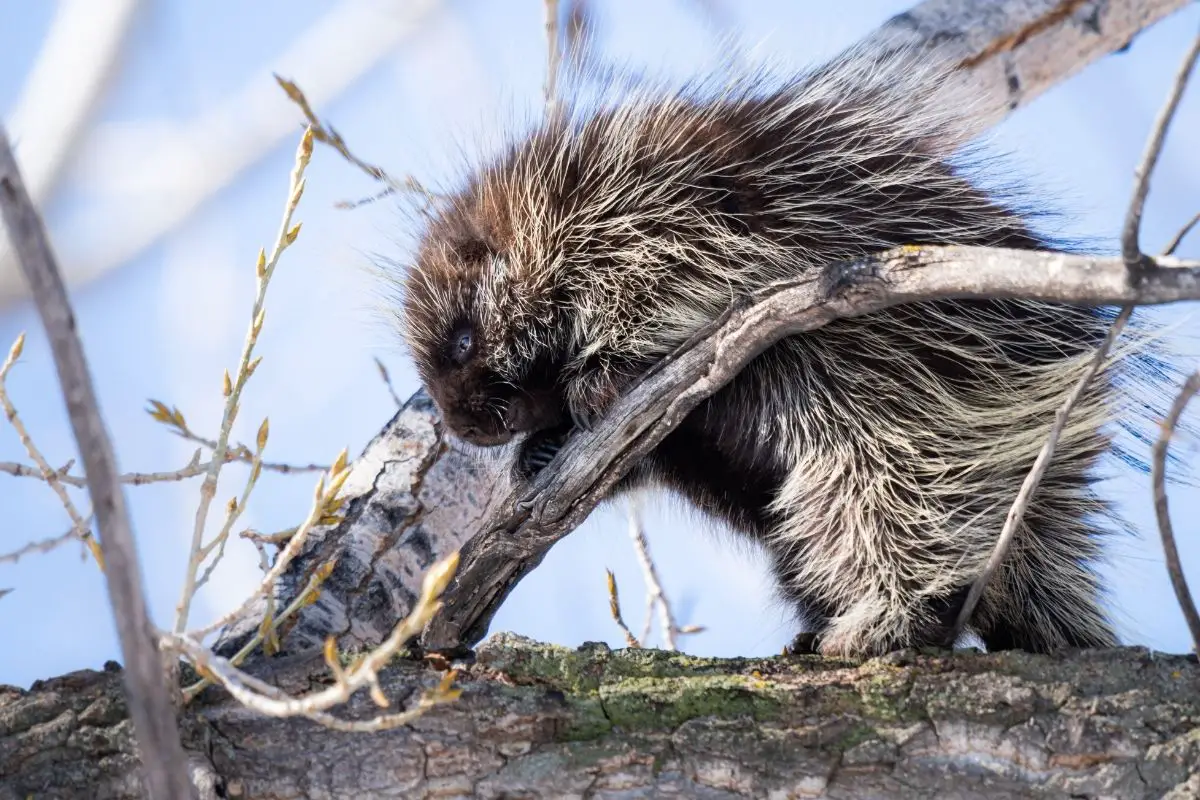
Porcupines don’t usually build nests. Instead, they look for homes in the environment around them. A porcupine might live in a tree branch, a tree root system, or even an upturned log.
You’ll usually find porcupines in heavily forested areas where their food sources are easily accessible. There are certain species of trees that porcupines are drawn to, like pine, hemlock, and aspen forests. Porcupines tend to prefer younger forests.
In these environments, it’s easier for them to strip bark from trees so that they can get plenty to eat!
Why Do Porcupines Have Quills?
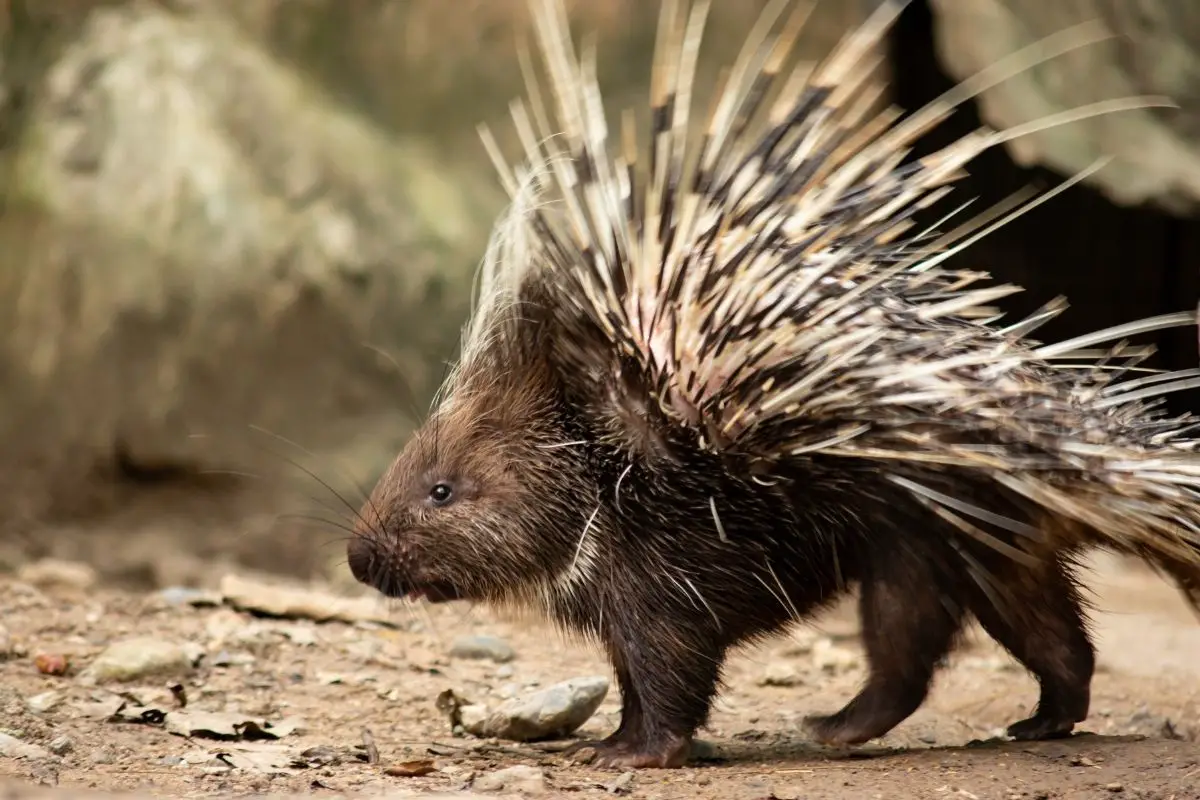
Quills help give porcupines a line of defense against natural predators. While many people believe that porcupines can throw their own quills, this isn’t actually true. However, porcupines can shed their quills, allowing them to pierce predators that are trying to attack.
Some species of porcupines have barbed quills, while others have quills that are naturally barbless. Both types of quills are incredibly sharp and can easily pierce through the skin of most predators. In fact, porcupine quills are capable of piercing skin with less than half the force of a hypodermic needle.
In fact, these quills are so sharp that porcupines are also at risk of piercing themselves! Thankfully, most species have quills that are naturally coated with antibiotics. That way, if a porcupine accidentally injures itself, it won’t be at risk for infection.
Do Porcupines Like to Play?
Most types of porcupines tend to be solitary. While mother porcupines stay with their young, most porcupines explore the world on their own as they grow older. The exception to this is New World porcupines, who often pair up with each other.
Even though porcupines like to be alone, they still have ways of communicating with one another. They’re able to send messages to other porcupines by grunting or making a high-pitched noise that sounds a little like a hooting owl! Porcupines also communicate by stomping on the ground and chattering their teeth.
According to Nicolette, an animal specialist at the Brooklyn Zoo, porcupines can be social creatures if they have time to get used to humans. “[Our porcupines] really enjoy coming out and meeting people and coming out for chats and programs.” Of course, that doesn’t mean that porcupines make good pets!
Even though it’s legal to keep porcupines as pets in many states, this spiky creature can be difficult to safely handle. Since porcupines aren’t used to socializing, they may also attack humans or other animals if they become agitated. Porcupines have been seen wrestling and roughhousing with each other in the wild, but these behaviors are presumably rare.
These interactions may be a way for porcupines to compete for a single food source.
What Are Baby Porcupines Like?
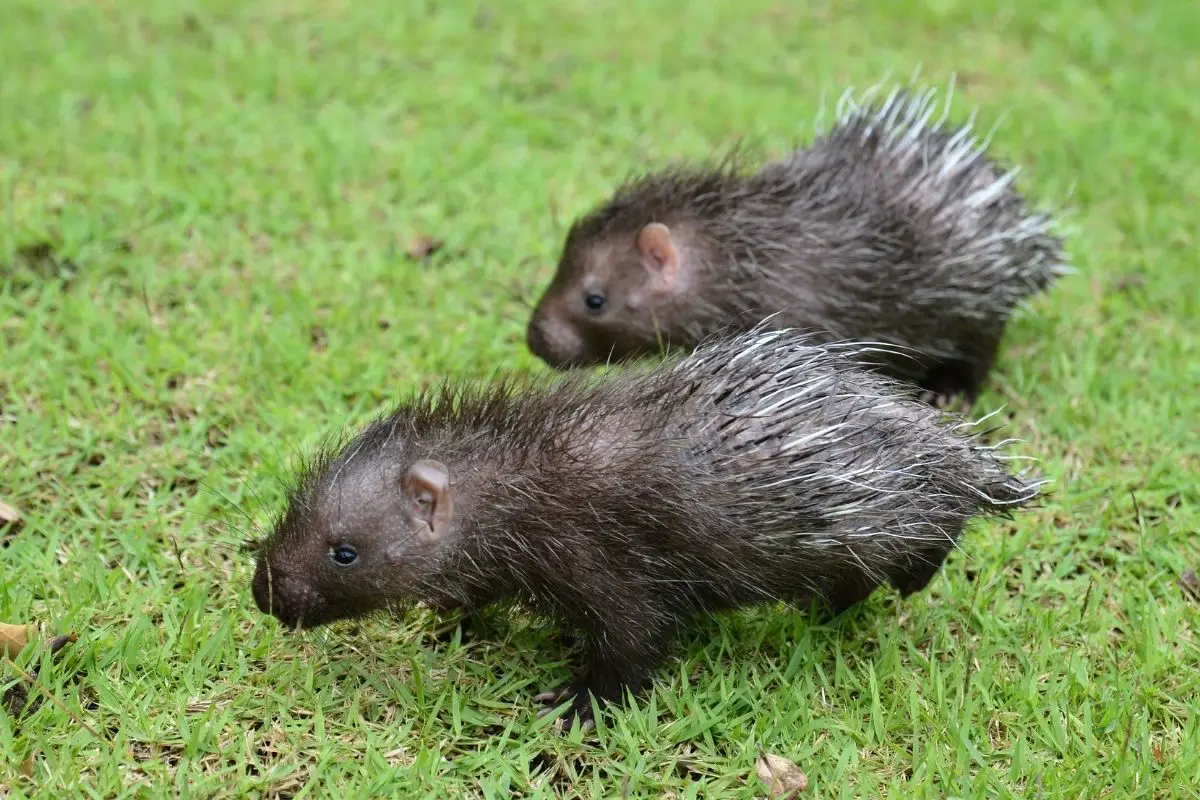
When porcupines are babies, they’re referred to as porcupettes. Usually, mothers only give birth to one baby at a time, and the baby is able to live independently within a few months. Mothers and babies that live together as a unit are called a prickle!
Most porcupine babies are born during April or May. While their quills are initially very soft, they tend to harden up within a few days of birth. Baby porcupines look a lot like adult porcupines, but they’re significantly smaller.
Even newborn porcupines are surprisingly independent. Unlike many other rodents, porcupines are able to open their eyes right after birth. They can even feed themselves by eating the vegetation around them.



